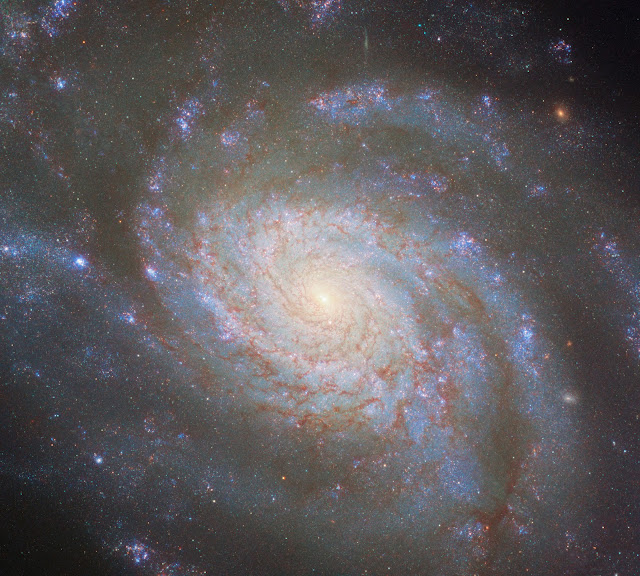The Butterfly Nebula: NGC 6302 in Scorpius | European Southern Observatory
The Butterfly Nebula, NGC 6302, is one of the brightest and most extreme planetary nebulae known. It is located about 4,000 light-years away, towards the Scorpius constellation (the Scorpion). The nebula is the swansong of a dying solar-like star lying at its center. At about 250,000 degrees Celsius and smothered in a blanket of hailstones, the star itself has never been observed as it is surrounded by a dense disc of gas and dust, opaque to light. This dense disc may be the origin of the hourglass structure of the nebula.
Towards the end of their life, massive stars can expand to giant dimensions. They shed most of the hydrogen in their outer layers as a strong "stellar wind", before they contract towards a final compact stage as "white dwarfs".
After this ejection process, the star remains thousands of times brighter and also much hotter than the Sun during a few thousand years. Its strong ultraviolet radiation has the effect of ionizing the previously ejected gas, which then shines before it disperses into interstellar space. The resulting nebulae (traditionally referred to as Planetary Nebulae , because of their resemblance to a planet in a small telescope) often exhibit very complex morphologies.
The Butterfly Nebula belongs to the class of bipolar nebulae, as this picture clearly illustrates. A dark, dusty and disc-like structure—seen edge-on in this image—obscures the central star from our view. However, its strong radiation escapes perpendicular to the disk and heats and illuminates the material deposited there by the stellar wind.
The origin of the dark disk may be due to the central star being a member of a double star system. This has been shown to be the case in other bipolar nebulae, where contrary to the Butterfly Nebula, there is a direct view towards the star.
Image 1 Credit: ESO / IDA / Danish 1.5 m/R. Gendler, A. Hornstrup and J.-E. Ovaldsen
Image 2 Credit: European Southern Observatory
Image 3 Credit: NASA, ESA, Digitized Sky Survey 2
Image Dates: December 3, 2009 / May 27, 1998 / June 18, 2020
#NASA #ESO #ESA #Astronomy #Space #Science #Hubble #BipolarNebulae #ButterflyNebula #BugNebula #NGC6302 #PlanetaryNebula #Scorpius #Constellation #MilkyWayGalaxy #Cosmos #Universe #DanishTelescope #VLT #DSS2 #Chile #UnitedStates #Europe #STEM #Education







.jpg)





